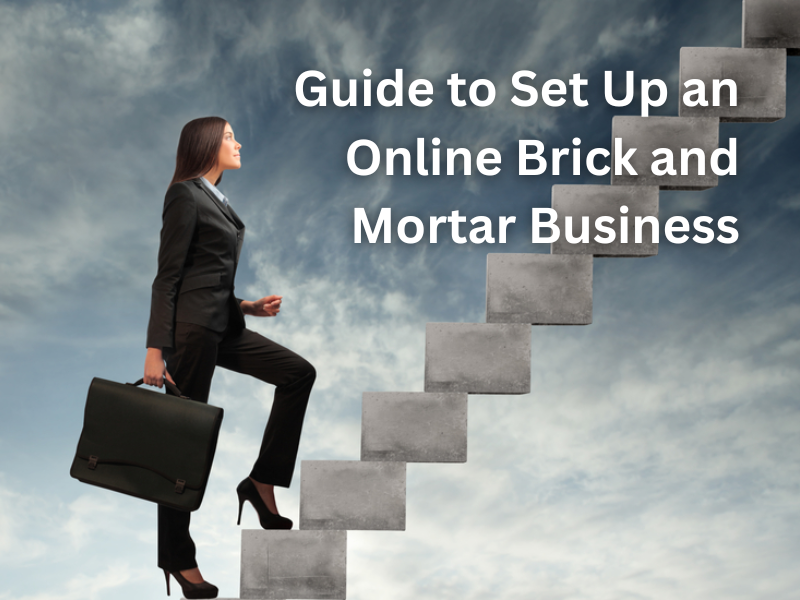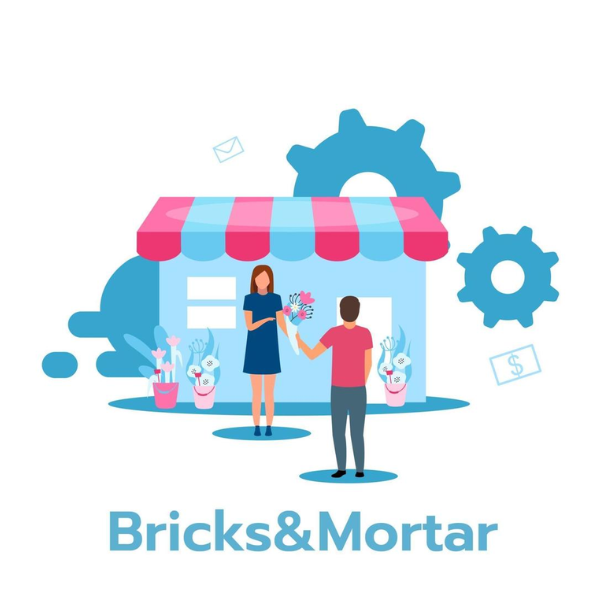If you’ve chosen to launch an online business. Your clients will place orders with you online, pay you, and then get their purchases from you. This is awesome! But creating an online presence for a physical retailer involves more than merely affixing a few stamps to a package and sending it out. Here, we’ll go over some top guidelines for setting up a successful online shop for a conventional brick and mortar business.
Things to Consider Before Starting an Online Store

We’ll approach constructing an e-commerce platform for a classic brick and mortar shop differently. Both online and in-store shopping have their obstacles. To clarify, these business models are different. They can also work together to boost customer satisfaction and company results.
Invent Different Products
Online stores provide different merchandise than traditional stores. Vintage glass may not be suitable for online sales due to its fragility or transit requirements. Thus, a comprehensive physical shop inventory should be done before establishing an online business. Next, read it carefully if you don’t have one. Make a separate stock of your virtual store’s best sellers. Plan to retrieve, pack, and ship these items. Update your POS system. If an item on your website sells the day before, it hurts sales. Just choose your web business’s products.
Consideration of Staff
Due to the additional work involved with e-commerce, you may find that you need to either recruit more people to manage the online store and its administrative activities or divide up the work among the current workforce. There is more labor involved when opening an Internet store. You can’t avoid that outcome.
But if you give it some thought up front, moving digital will be far less of a shock to your system. It might require hiring a seasonal worker to retrieve stock and pack orders. It’s possible to assign an existing worker the task of managing the online store. The essential thing to watch out for is that the costs of running the internet business don’t exceed the revenue they generate.
That might be the case at first. It might not be financially viable. But in the long run, you want the store to generate more income than it spends on operations. Brick and mortar businesses face a steeper learning curve overall, which might temporarily slow down sales. As you and your team gain experience, it won’t be the case anymore.
Steps to Set Up an Online Store for Your Brick and Mortar Business

1. Choose eCommerce Platform
Choosing a platform is the first step in developing an online storefront to complement a traditional brick and mortar establishment. Like the location you choose for your brick and mortar shop, your eCommerce platform will serve as the cornerstone around which your business will revolve.
You also had the option of constructing your physical location from the ground up, but you probably went with something preexisting or having been constructed by someone else. The same holds true when deciding on an online store platform; you have the option of making one yourself or using an already established service.
2. Register Domain Name
The clients you intend to make purchases from your online store will need to be directed to your domain name. Domain names typically correspond to the names of brick and mortar businesses, however, this is not always the case.
Some traditional shops seek to provide a somewhat different experience online, and many desirable domain names have already been snapped up. For instance, some companies might choose to limit their online sales to only one category of merchandise. After deciding on a domain name, registration may be completed on several sites.
3. Make Website
There is no requirement for elaborate design on your eCommerce website. Actually, clients prefer a basic, plain experience; therefore, any attempts to make it fancy or difficult will hinder your sales. Making ensuring your site is well-organized and simple to navigate while yet looking polished should be your first priority.
Because eCommerce systems have improved so greatly over the past decade, you only need to tweak the look and add your own branding to get started. You may, of course, hire a professional web designer for assistance if you feel you need it and have the funds available. If you hire a professional designer, you can add additional personalized touches that set you apart from the competition and give your consumers something they won’t find anywhere else.
4. Add Selling Products
You may more easily decide what to sell online since you have an established physical location from which to draw inspiration. While some brick and mortar retailers may provide every item they sell online, the vast majority offer only the best-selling and/or most easily sent goods (usually little more than 100 in total).
If you want to publish a catalog of products that is both attractive and useful, you should think about adopting digital catalog software. This not only speeds up the launch of your online business but also streamlines processes like stock management, shipping, returns, and more.
5. Choose Shipping Method
The shipping process is a major barrier to purchase completion for online customers. Your online store’s success will depend on how you ship your items and how much you charge, whether because of high shipping prices or because of extended delivery times. This means it’s more important than ever to have a good handle on shipping prices and choose reliable carriers for all of your items.
6. Choose Payment Procedure
Your online store’s ability to process payments is crucial to its success. This necessitates the back-end configuration of payment processing for your web business. You’ll be relieved to learn that, despite appearances, this is actually rather simple.
In fact, to facilitate quicker implementation, payment processors are built into many e-commerce systems. It is important to choose a payment processor that is well-known and widely utilized by your target market in order to gain their confidence.
7. Add Contact
You should include an About page and a Contact page in addition to the product pages in your online shop. These two sections are essential if you want to win over your readers and stand out from the crowd. You don’t need a professional copywriter, but you should get your work edited and proofread before releasing it.
Your About page should include background information about you and your business. Use photographs that you took yourself or that were taken in your shop rather than stock photos.
8. Advertise Your Store
You may easily attract new clients to your online shop by promoting it at your physical location. The more your offline and internet stores work together, the more money you’ll make. One effective strategy for doing so is to allow online viewers to participate in in-store events through means such as live streaming and social media sharing of the footage.
Your eCommerce domain should also be used in other branding and marketing efforts, such as hashtags. To spread the word and promote first-time online purchases, you may want to try providing in-store consumers with a special discount when they shop online.
Wrap It Up
Adding an online storefront is a game-changer for any business looking to increase its customer base, its revenue, and its ability to compete in the modern digital marketplace. You can master the intricacies of internet marketing and turn it into a source of passive income with the help of netmoneyhacks. The goal of netmoneyhacks is to teach people how to leverage internet marketing to create passive income. Having a strong online presence, attracting new customers, and making sales even while your business is closed are all possible thanks to the use of various internet resources.




















